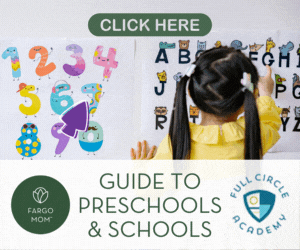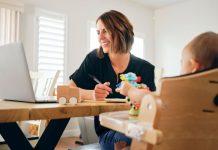
As moms, we often take on multiple jobs. For example, family chef, chauffeur, and cleaning crew. Or maybe your roles are more in line with being the family accountant, stockbroker, and professional scheduler.
Thankfully, there are helpful tools for some of these things: like TurboTax for accounting, Blue Apron for chef duties, and Uber for carpool (just kidding!).
And if sometimes just keeping your own obligations organized seems daunting, you’re likely overwhelmed with taking on the role of family activity director.
Fortunately, there are many options for family planners out there to help you stay organized. Here is a list of tools to help your family stay on top of the chaos that is everyday life.
Family Planners to Stay Organized
Paper planners: best for when you have littles.
These old school family planners hold a special place in my heart. I love handwritten notes, lists, and cards, so this feels natural for me.
Because you’ll likely be making, managing and/or driving everyone to all the activities, it makes sense to put everyone’s schedule in one place.
Things to keep in mind when choosing a paper planner:
- You want one large enough to write all the things you have going, including social engagements.
- Skip the internal floral water marks and motivational quotes. Though it might look nice, it’s a distraction and not the purpose of the planner.
- Find one with time slots so you can easily keep the day chronological. This saves you from needing to write in the times yourself.
- Don’t buy one with blank dates, you only create extra work for yourself and risk the chance of making a mistake when scheduling out.
- Use 2-3 colors or a way to indicate the important stuff, like putting doctor’s appointments in red or underlining them.
- Keep the monthly view to categorize the big stuff: vacations, doctor’s appointments, etc., and use the weekly view for those plus all the other things.
Benefits:
- A paper planner serves one purpose, whereas a phone has a million purposes. So you’re less likely to get distracted by emails when opening your planner than you would checking the schedule on your phone.
- Your planner doesn’t have a battery, so you never have to worry about it dying and rendering you stranded.
- Also, studies show that writing (over typing) helps with memory.
- And lastly, it’s quicker to write something down than click through your phone to add details, set reminders, add location, etc.
Pro-Tip: Make checking in with your planner part of your morning routine to prepare for the day and part of your nighttime routine to reflect on the day and see what the next day’s schedule will include.
Electronic planners: best for when you have older kids.
For moms who are more tech savvy there are some cool electronic family planner options.
One benefit to this route is having everyone in the family sync their devices to have the same calendar on their phones. This gives more responsibility to older kids regarding the schedule. And it helps them practice the important life skill of time management.
Things to keep in mind when choosing an electronic planner:
- Find family planners that can sync to all your phones, regardless of the brand.
- Walk through how to use it with the kids so it becomes second nature.
- Make sure you and the kids have notifications turned on.
- There are free versions, so you can try one out first before committing to the cost. However, some capabilities like the monthly view and multiple reminders are for paying users only.
Benefits:
- You can use your phone to set visual and auditory reminders whereas a paper planner does not have this option.
- You’re less likely to forget your phone than you are a planner because it’s always with you.
- You’re more likely to get your older kids to check in with it if it’s on their phone.
- You can create an ongoing grocery list for everyone to add too (this can be a pro or a con).
- It also has the capability of assigning chores to help family members stay on top of daily or weekly tasks.
Pro-Tip: If you’ve already matched family members to colors on a wall or paper calendar, keep the colors the same to avoid confusion.
Wall calendar: for all families.
This can be a whiteboard on your fridge, a desk calendar on the counter, or even a monthly flip calendar hanging on the wall.
Things to keep in mind when choosing a wall calendar:
- Put it in a spot that’s visible to the entire family.
- Don’t overcrowd the calendar with unimportant details, just the activity time and possible location.
- If it’s on a desk, keep the desk clear of clutter so it stands out.
- If using the whiteboard versions, make sure younger kids can’t reach to erase or doodle on it.
Benefits:
- Everyone can see it and reference it multiple times a day.
- You can have family meetings around it and update it as a group.
- Anyone can add their own activities to it, which saves you a step.
Pro-Tip: Put a color key at the top and save space by just writing the activity in the color that corresponds with that family member.
Find what works for you.
Any of these options are solid, it’s just a matter of whatever you decide works best for your family.
The most important thing is consistency! So whatever organizational tool you use, make sure you set reminders for daily check-ins.
Happy planning!
















